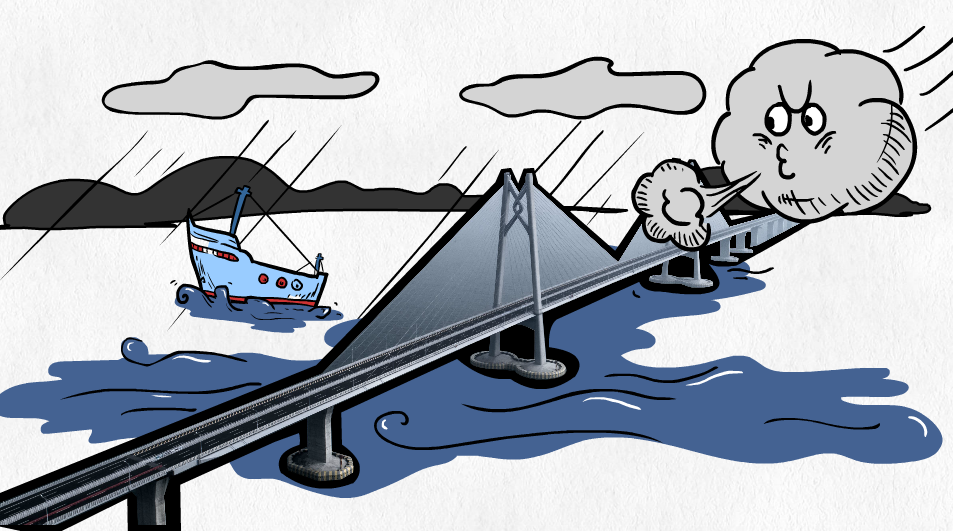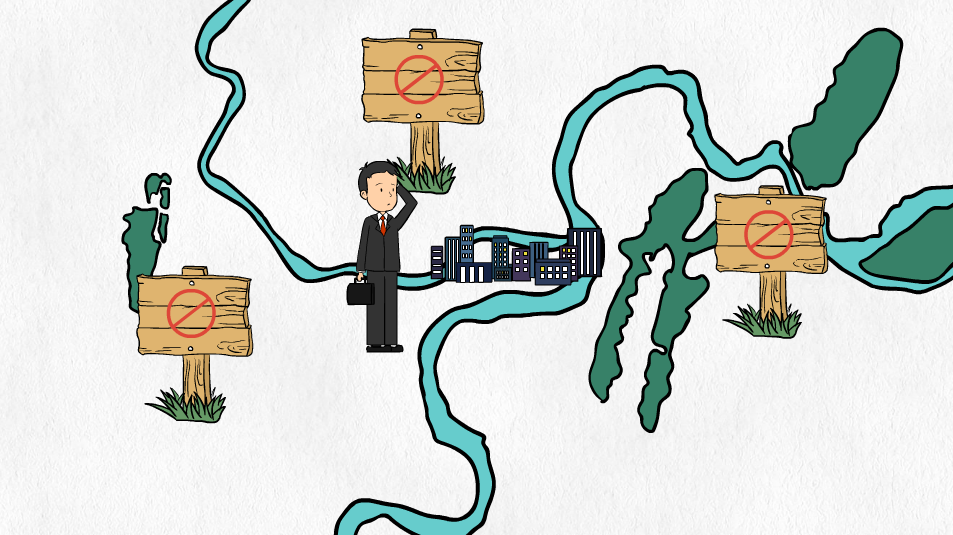

Editor's Note: To mark the PRC's 70th anniversary, our series "Data Speaks" has dedicated five episodes to exploring China's stunning strides in the last seven decades. The first episode is on China's record bridge-building.
The longest, highest and fastest-built on the planet: "Unparalleled" is perhaps the best word to describe the scale and ingenuity of China's bridge construction over the past 70 years.
From Nanjing's double-decked, road-rail Yangtze River Bridge and the world's widest multi-pylon cable-stayed Jiaxing-Shaoxing Bridge, to the newly-operated Hong Kong-Zhuhai-Macao Bridge (HZMB), China has connected once-isolated cities and communities via the world's largest collection of bridges.
Eight of the world's 10 highest bridges, including the tallest, the Beipan River Bridge, which is the height of a 200-story building. Six of the world's 10 longest sea-crossing bridges, including the HZMB, which is also the longest sea bridge in the world and designed to withstand a super typhoon, an 8.0-magnitude earthquake or a strike by a 300,000-ton cargo vessel. Six of the world's top 10 suspension bridges and seven of the world's top 10 cable-stayed bridges.

But the numbers alone mean little without taking into account the influence these structures have on people's lives.
Take Chongqing as an example. Sprawling across the Yangtze and Jialing rivers, the mountain city in southwestern China was once near-impenetrable. Steep slopes and broad rivers isolated the city from the rest of the country, and limited local people's opportunities.
Dating back to 1949, waiting four hours for a ferry to cross one of the rivers was not unusual in Chongqing. Everything changed though with the construction of the Chongqing Yangtze River Bridge. Four hours was cut to just a couple of minutes. Today, Chongqing is home to more than 4,000 bridges.
Behind the stunning speed of construction is the Chinese people's fighting spirit. Chongqing people voluntarily participated in the construction of the Yangtze River Bridge in the 1980s. Without their dedication, the mountain city would never have become the "Bridge Capital of China."

Innovation is another important factor in China's infrastructure achievements.
China's "pier-top spin construction approach" in building the Datong-Qinhuangdao line, for instance, heavily reduced costs and difficulties. And the HZMB is a model of innovation. The bridge's tunnel submerges into the water at a maximum depth of 50 meters and is connected by 33 pipelines with a total cross section equal to the size of a tennis court.
"When confronted by mountains, one cuts a path through. When blocked by a river, one bridges to the other side." The wisdom in the old Chinese proverb exemplifies an approach which has helped drive China's shift from impoverishment to fast-development over the past 70 years.
Animation director: Song Yuhan
Animation post-production: Song Yuhan, Yuan Min, Chang Jian, Xu Shouyi
Animation consultant: Luo Qing
Script writer: Liu Jianxi
Copy editor: John Goodrich
Voiceover: Mark Fontes
Producer: Bi Jianlu
Supervisor: Mei Yan
(If you want to contribute and have specific expertise, please contact us at opinions@cgtn.com.)

Copyright © 2018 CGTN. Beijing ICP prepared NO.16065310-3
Copyright © 2018 CGTN. Beijing ICP prepared NO.16065310-3